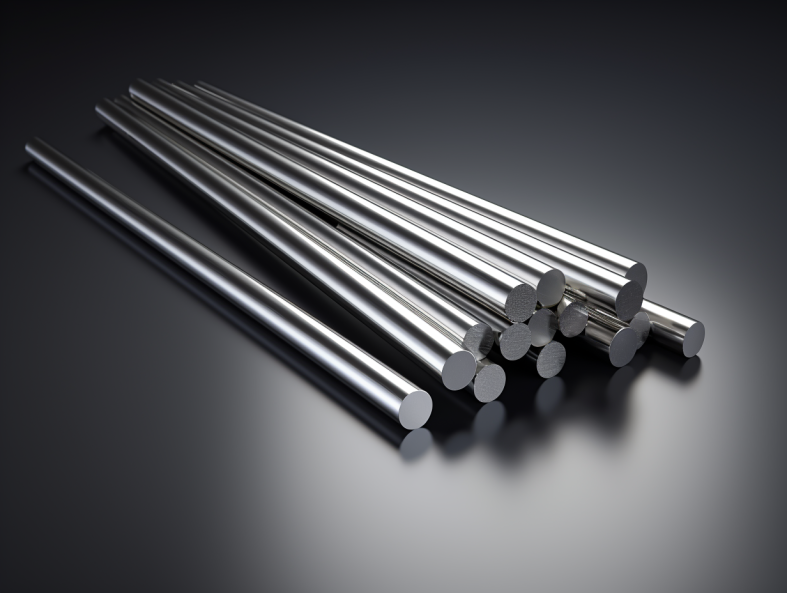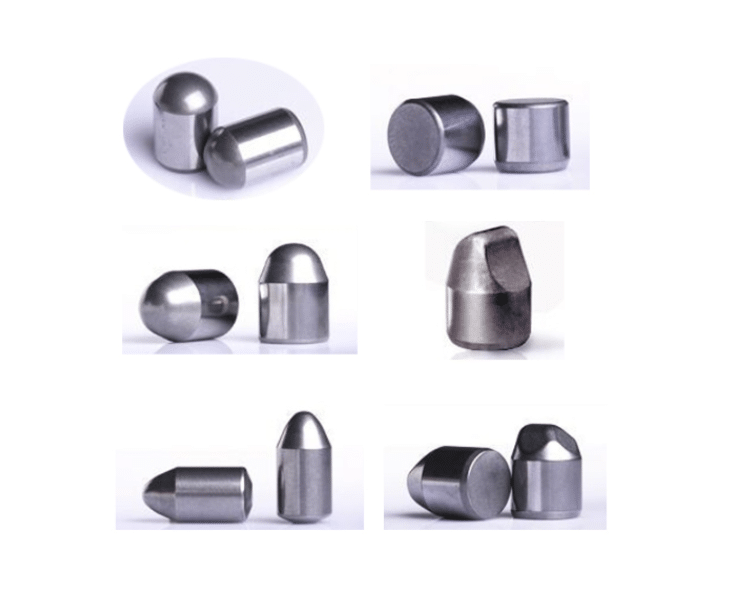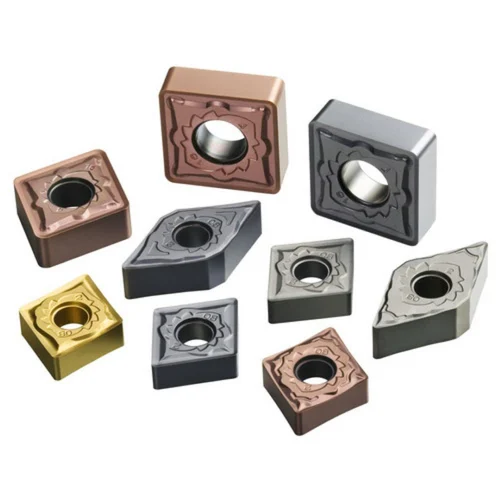Introduction
Definition of cemented carbide rods
Cemented carbide rods with one straight coolant hole are a type of cutting tool commonly used in machining applications. These rods are made from a combination of tungsten carbide and a binder material, such as cobalt. The coolant hole, which runs straight through the rod, allows for the efficient flow of coolant during the machining process, helping to dissipate heat and prolong tool life. This design feature also helps to prevent chip clogging and improve chip evacuation, resulting in smoother and more precise cuts. Cemented carbide rods with one straight coolant hole are highly regarded for their durability, wear resistance, and ability to withstand high cutting speeds and feed rates. They are widely used in industries such as automotive, aerospace, and manufacturing, where precision and efficiency are paramount.
Importance of coolant holes in carbide rods
Coolant holes play a crucial role in carbide rods, specifically in the case of cemented carbide rods with one straight coolant hole. These holes are designed to facilitate the efficient flow of coolant, which helps in dissipating heat generated during the machining process. The presence of coolant holes allows for better cooling and lubrication, which in turn enhances the overall performance and durability of the carbide rods. By effectively reducing the temperature at the cutting edge, the coolant holes prevent excessive heat buildup, thereby minimizing the risk of tool wear, deformation, and failure. Additionally, the coolant holes also aid in chip evacuation, ensuring smooth and uninterrupted machining operations. Thus, the importance of coolant holes in carbide rods cannot be overstated, as they significantly contribute to the longevity and effectiveness of the tooling.
Purpose of the article
The purpose of the article is to provide an in-depth understanding of cemented carbide rods with one straight coolant hole. These rods play a crucial role in various industries, including manufacturing, machining, and metalworking. By exploring their design, features, and applications, this article aims to educate readers about the advantages and benefits of using cemented carbide rods with one straight coolant hole. Additionally, it will discuss the importance of coolant holes in enhancing the performance, efficiency, and durability of these rods. Whether you are a professional in the industry or simply interested in learning more about this topic, this article will serve as a valuable resource to expand your knowledge and make informed decisions in your work or projects.

Properties of Cemented Carbide Rods
Composition of cemented carbide
Cemented carbide rods with one straight coolant hole are a type of high-performance cutting tool widely used in various industries. These rods are composed of a mixture of tungsten carbide and a binder material, such as cobalt. The addition of the coolant hole allows for efficient cooling during the cutting process, preventing overheating and prolonging the tool’s lifespan. The composition of cemented carbide ensures excellent hardness, wear resistance, and toughness, making it suitable for demanding applications. With their unique design and superior properties, cemented carbide rods with one straight coolant hole are a reliable choice for precision machining and metalworking tasks.
Hardness and wear resistance
Cemented carbide rods with one straight coolant hole are known for their exceptional hardness and wear resistance. The combination of a high carbon content and a binder phase of cobalt or nickel results in a material that can withstand extreme conditions and maintain its integrity. These rods are widely used in industries such as mining, construction, and metalworking, where they are subjected to heavy loads and abrasive environments. The straight coolant hole allows for efficient cooling during operation, preventing overheating and extending the lifespan of the rods. With their superior hardness and wear resistance, cemented carbide rods with one straight coolant hole are a reliable choice for demanding applications that require durability and performance.
Thermal conductivity
Thermal conductivity is a crucial property when it comes to cemented carbide rods with one straight coolant hole. The ability of the material to efficiently transfer heat plays a significant role in the performance and durability of these rods. The straight coolant hole allows for effective cooling, ensuring that the temperature of the rod remains within the desired range. This, in turn, helps to prevent overheating and maintain the structural integrity of the rods during high-speed machining operations. The thermal conductivity of cemented carbide rods with one straight coolant hole ensures optimal heat dissipation, contributing to enhanced productivity and extended tool life.
Manufacturing Process
Powder preparation
In the process of preparing cemented carbide rods with one straight coolant hole, powder preparation plays a crucial role. The quality of the powder used directly affects the performance and durability of the rods. To ensure high-quality rods, a meticulous powder preparation process is followed. It involves selecting the right raw materials, carefully measuring and mixing them in precise proportions, and subjecting the mixture to specific heat treatment processes. This meticulous approach ensures that the resulting powder is of the desired composition and possesses the necessary properties for the production of cemented carbide rods with one straight coolant hole.
Mixing and pressing
Mixing and pressing are crucial steps in the production of cemented carbide rods with one straight coolant hole. In the mixing stage, the raw materials, including tungsten carbide powder and a binder, are thoroughly blended to ensure a homogeneous mixture. This mixture is then pressed into a desired shape using high-pressure equipment. The pressing process helps to compact the powder particles, enhancing the strength and density of the carbide rods. It is during this stage that the straight coolant hole is also created, allowing for efficient cooling during the application of the rods. The accuracy and precision in mixing and pressing directly impact the quality and performance of the final product.
Sintering
Sintering is a crucial step in the production of cemented carbide rods with one straight coolant hole. During the sintering process, the raw materials are heated to a high temperature, causing them to bond together and form a solid mass. This process ensures the uniform distribution of tungsten carbide particles within the matrix, resulting in a high-density and high-performance material. Additionally, the sintering process helps to eliminate any residual porosity and enhance the overall strength and hardness of the cemented carbide rods. It is through this meticulous sintering process that the rods acquire their exceptional mechanical properties, making them ideal for various industrial applications.
Design Considerations
Straight coolant hole design
The straight coolant hole design in cemented carbide rods is an important feature that enhances the performance and efficiency of the rods. This design allows for the direct and efficient flow of coolant through the rod, ensuring effective cooling and lubrication during machining operations. The straight coolant hole also helps in removing chips and debris from the cutting area, preventing clogging and improving the overall tool life. With the straight coolant hole design, operators can achieve higher cutting speeds and feed rates, resulting in increased productivity and superior surface finish. Overall, the straight coolant hole design in cemented carbide rods plays a crucial role in optimizing machining processes and delivering superior performance.
Optimal coolant hole diameter
The optimal coolant hole diameter plays a crucial role in the performance of cemented carbide rods with one straight coolant hole. It determines the flow rate and pressure of the coolant, which directly affects the heat dissipation and chip evacuation during machining. Choosing the right coolant hole diameter ensures efficient cooling and prolongs the tool life. It is important to consider factors such as the material being machined, cutting conditions, and desired cooling effect when determining the optimal coolant hole diameter for cemented carbide rods.
Positioning of the coolant hole
The positioning of the coolant hole in cemented carbide rods with one straight coolant hole is a critical factor that directly affects the performance and efficiency of the tool. The coolant hole is strategically placed to ensure optimal cooling and lubrication during the machining process. By directing the coolant directly to the cutting edge, it helps dissipate heat, reduce friction, and prolong the tool’s lifespan. Additionally, the positioning of the coolant hole also plays a role in chip evacuation, preventing chip buildup and improving chip control. Overall, the precise positioning of the coolant hole is essential for maximizing the tool’s performance and achieving superior machining results.
Benefits of Coolant Holes
Improved heat dissipation
Improved heat dissipation is a key factor in enhancing the performance of cemented carbide rods with one straight coolant hole. By incorporating a coolant hole directly into the rod, heat generated during machining can be efficiently dissipated. This ensures that the temperature of the rod remains within optimal operating limits, preventing premature wear and extending the tool’s lifespan. The improved heat dissipation also allows for higher cutting speeds and feeds, resulting in increased productivity and reduced machining time. Overall, the implementation of a straight coolant hole significantly improves the heat management capabilities of cemented carbide rods, making them an ideal choice for demanding machining applications.
Reduced cutting temperature
Reduced cutting temperature is one of the key advantages of cemented carbide rods with one straight coolant hole. The coolant hole allows for the efficient flow of coolant directly to the cutting edge, resulting in a significant decrease in cutting temperature. This reduction in temperature not only improves tool life but also enhances the overall machining process by minimizing thermal damage to the workpiece and reducing the risk of tool wear and breakage. With cemented carbide rods with one straight coolant hole, manufacturers can achieve higher cutting speeds and feed rates while maintaining excellent tool performance and surface finish.
Extended tool life
Extended tool life is a crucial factor in the performance and efficiency of cemented carbide rods with one straight coolant hole. By incorporating this innovative design, the rods are able to withstand higher cutting speeds, resulting in reduced wear and tear. This not only extends the lifespan of the tool but also enhances its overall performance. With the extended tool life offered by these rods, manufacturers can achieve higher productivity and cost savings in their machining processes. Additionally, the improved tool life allows for longer uninterrupted operation, reducing downtime and increasing production output. Overall, the implementation of cemented carbide rods with one straight coolant hole significantly contributes to improved tool life, making them an ideal choice for various machining applications.
Applications
Machining of hardened steel
Machining of hardened steel requires specialized tools and techniques to ensure precision and efficiency. One such tool that has gained popularity in recent years is cemented carbide rods with one straight coolant hole. These rods are made from a combination of tungsten carbide and a binder metal, which gives them exceptional hardness and wear resistance. The straight coolant hole allows for effective cooling during the machining process, reducing heat buildup and prolonging tool life. With the use of cemented carbide rods with one straight coolant hole, manufacturers can achieve high-quality finishes and tight tolerances when machining hardened steel, making them an essential component in modern machining operations.
Turning operations
Turning operations are a vital part of machining processes, and cemented carbide rods with one straight coolant hole play a crucial role in achieving high precision and efficiency. These rods are specifically designed to withstand the demanding conditions of turning operations, providing excellent heat resistance and wear resistance. The straight coolant hole allows for effective cooling and lubrication during the machining process, reducing tool wear and improving chip evacuation. With their superior hardness and toughness, cemented carbide rods with one straight coolant hole are the preferred choice for turning operations in various industries, including automotive, aerospace, and manufacturing. Whether it’s rough turning, finish turning, or contour turning, these rods ensure consistent performance and exceptional results.
Drilling and milling
Drilling and milling are two common machining processes used in the production of cemented carbide rods with one straight coolant hole. In the drilling process, a drill bit is used to create a hole in the rod, allowing coolant to flow through and cool the cutting edge. This helps to prolong the tool life and improve the efficiency of the machining operation. On the other hand, milling involves removing material from the surface of the rod using a rotating cutter. This process is used to shape the rod and create features such as grooves or flutes. Both drilling and milling are crucial steps in the manufacturing of cemented carbide rods with one straight coolant hole, ensuring precision and quality in the final product.




